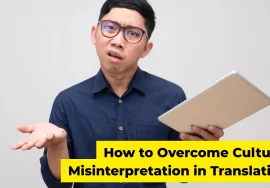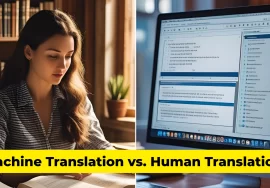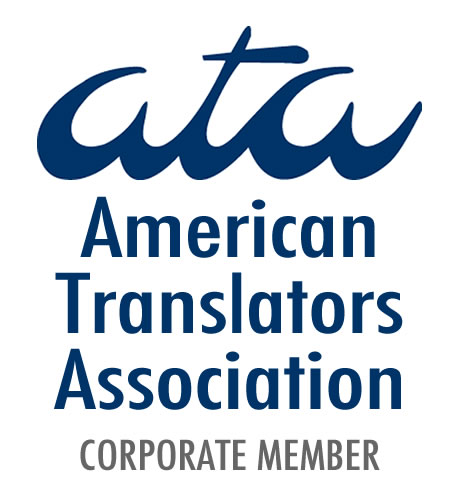
Why Accurate Translation Requires Cultural Awareness: Avoiding Costly Misinterpretations
In our increasingly globalized world, accurate translation plays a crucial role in communication across cultures. But translation isn’t just about swapping words from one language to another. It’s about understanding the nuances, history, and social norms that shape language. This is where cultural awareness becomes a vital skill for any professional translator.
Without cultural awareness, translations can lead to confusion, offense, or even major business and diplomatic blunders. From advertising mishaps to legal misinterpretations, cultural misinterpretation in translation can have serious consequences. So, why does accurate translation require cultural awareness? Let’s explore.
What is Cultural Awareness in Translation?
Cultural awareness in translation means understanding the social, historical, and emotional context behind words. Languages evolve within their own cultures, and certain phrases, idioms, and tones may not have a direct equivalent in another language. A translator must bridge these gaps to convey not just the words but the intended meaning.
For instance, in English, “break a leg” is a way to wish someone good luck in the theater world. However, a literal translation of this phrase into another language could cause confusion or even alarm. Similarly, colors, gestures, and symbols carry different meanings across cultures—what’s considered respectful in one country could be offensive in another.
The Pitfalls of Literal Translation Without Cultural Context
When translations ignore cultural nuances, the results can be disastrous. Major corporations, political leaders, and even medical professionals have learned this the hard way.
Take the case of KFC’s expansion into China. Their famous slogan, “Finger-lickin’ good,” was mistranslated as “Eat your fingers off,” leading to an embarrassing and costly rebranding effort. Another example comes from HSBC Bank, which had to spend millions correcting a mistranslated slogan that was meant to say “Assume Nothing” but instead read as “Do Nothing” in some languages.
These cases highlight how cultural misinterpretation in translation can damage a brand, confuse customers, or even result in lost revenue.
Key Aspects of Cultural Awareness in Translation
Idioms and Expressions
Many languages have unique idioms that don’t make sense when translated literally. Consider:
- The Spanish phrase “Más vale tarde que nunca” means “Better late than never.” A word-for-word translation wouldn’t capture its meaning effectively.
- In Japan, the saying “Neko ni koban” (猫に小判) translates to “Coins to a cat,” which is equivalent to “Casting pearls before swine” in English.
If a translator lacks cultural awareness, they may misinterpret these idioms, leading to confusion or a loss of meaning.
Tone and Formality
Different cultures have varying expectations regarding tone and formality in language. For instance:
- In English-speaking cultures, emails and business communications tend to be more informal.
- In Japan, business correspondence often follows strict formal structures and honorifics.
- Some languages have different pronouns depending on levels of familiarity and respect, such as “tu” vs. “usted” in Spanish or “du” vs. “Sie” in German.
Without an understanding of these nuances, a translation might come off as too informal, rude, or even condescending.
Humor and Sarcasm
Humor is deeply cultural and often doesn’t translate well. A joke that’s funny in English may fall flat in another language—or worse, come across as offensive. For example, British humor, which relies heavily on irony and sarcasm, often doesn’t translate well into languages that use more direct communication styles.
Cultural Sensitivity and Taboos
What’s acceptable in one culture may be inappropriate in another. Topics such as politics, religion, and social customs require careful handling. For example:
- Certain gestures, like the “thumbs up,” are positive in Western cultures but offensive in parts of the Middle East.
- Direct eye contact is seen as a sign of confidence in some cultures but may be perceived as rude or aggressive in others.
A translator must be aware of these differences to ensure the message remains respectful and culturally appropriate.
Real-World Consequences of Cultural Misinterpretation in Translation
Marketing Failures
One of the most well-known cultural translation failures occurred when Pepsi’s slogan “Come Alive with the Pepsi Generation” was translated into Chinese as “Pepsi brings your ancestors back from the dead.” This mistranslation not only confused customers but also deeply offended many, as ancestor reverence is an important part of Chinese culture.
Legal and Medical Risks
Inaccurate translation in legal and medical settings can have life-altering consequences. A well-documented case is that of Willie Ramirez, a man in the U.S. who was left quadriplegic due to a medical mistranslation. His family used the Spanish word “intoxicado” to describe his symptoms, which was incorrectly translated as “intoxicated” instead of “poisoned.” As a result, doctors misdiagnosed him, leading to a tragic outcome.
Diplomatic Missteps
Even government officials have made cultural misinterpretation errors. A famous example involves a speech given by U.S. President Jimmy Carter in Poland, where a mistranslation led to phrases that made it sound like he was making romantic advances toward the Polish people.
The Role of Human Translators in Preventing Cultural Errors
So, why accurate translation requires cultural awareness? The answer lies in the human touch. While AI and machine translation tools like Google Translate are improving, they still lack the cultural awareness necessary for nuanced, high-quality translations.
Human translators:
- Understand cultural context and can adjust wording accordingly.
- Ensure that humor, idioms, and formalities are appropriate for the target audience.
- Avoid embarrassing, offensive, or costly mistranslations.
Machine translation might be useful for simple texts, but for business, legal, and medical translations, relying solely on AI can be risky.
How Businesses Can Ensure Culturally-Aware Translations
- Hire Professional Human Translators
Investing in professional, culturally aware translators ensures your message is clear and appropriate. - Provide Context to Your Translators
The more context translators have, the better they can adapt content for cultural accuracy. - Use Localization Services
Localization goes beyond translation—it ensures that every element of communication (date formats, currency, symbols) aligns with cultural expectations. - Test Translations with Native Speakers
Before launching international campaigns, businesses should test translations with native speakers to catch any cultural inconsistencies.
Accurate translation isn’t just about getting the words right—it’s about getting the message right. Cultural awareness plays a critical role in ensuring translations are not only precise but also respectful, engaging, and effective. From avoiding marketing disasters to ensuring legal clarity and medical safety, culturally aware translation is essential for meaningful global communication.
For businesses, professionals, and organizations looking to expand their reach across different cultures, investing in expert human translators is the best way to ensure success. Machine translation has its place, but it can’t yet match the depth of understanding and cultural insight that a skilled human translator brings.
Want to ensure your translations are both accurate and culturally aware? Contact VM Language Access today for expert translation services that go beyond words and capture true meaning.











